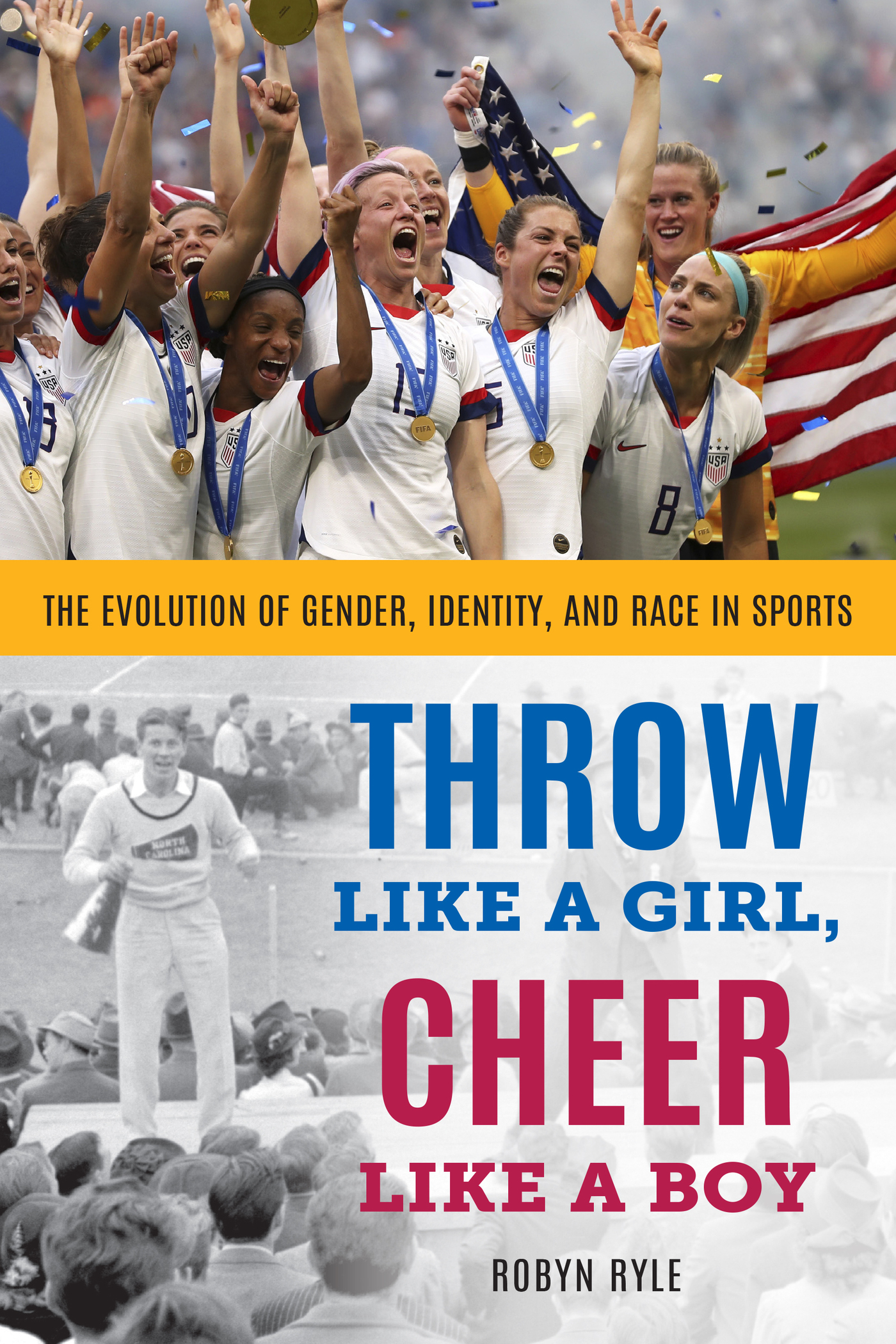Throw Like a Girl,
Cheer Like a Boy
Throw Like a Girl,
Cheer Like a Boy
The Evolution of Gender, Identity, and Race in Sports
Robyn Ryle
ROWMAN & LITTLEFIELD
Lanham Boulder New York London
Published by Rowman & Littlefield
An imprint of The Rowman & Littlefield Publishing Group, Inc.
4501 Forbes Boulevard, Suite 200, Lanham, Maryland 20706
www.rowman.com
6 Tinworth Street, London SE11 5AL
Copyright 2020 by Robyn Ryle
All rights reserved. No part of this book may be reproduced in any form or by any electronic or mechanical means, including information storage and retrieval systems, without written permission from the publisher, except by a reviewer who may quote passages in a review.
British Library Cataloguing in Publication Information Available
Library of Congress Cataloging-in-Publication Data
Names: Ryle, Robyn, author.
Title: Throw like a girl, cheer like a boy : the evolution of gender, identity, and race in sports / Robyn Ryle.
Description: Lanham, Maryland : Rowman & Littlefield, 2020. | Includes bibliographical references and index. | Summary: This book looks at the intersection of sports and identities, using sports to reveal the complicated history of gender, sexuality, race, and social justice while connecting those stories to the world of todays athletes. It highlights the ways sports often contribute to inequalities, but also how they can help make the world more accepting Provided by publisher.
Identifiers: LCCN 2019040034 (print) | LCCN 2019040035 (ebook) | ISBN 9781538130667 (cloth) | ISBN 9781538130674 (epub)
Subjects: LCSH: SportsSex differences. | Racism in sports. | Discrimination in sports. | Sex discrimination in sports. | Homophobia in sports.
Classification: LCC GV706.5 .R95 2020 (print) | LCC GV706.5 (ebook) | DDC 306.4/83dc23
LC record available at https://lccn.loc.gov/2019040034
LC ebook record available at https://lccn.loc.gov/2019040035
 TM The paper used in this publication meets the minimum requirements of American National Standard for Information Sciences Permanence of Paper for Printed Library Materials, ANSI/NISO Z39.48-1992.
TM The paper used in this publication meets the minimum requirements of American National Standard for Information Sciences Permanence of Paper for Printed Library Materials, ANSI/NISO Z39.48-1992.
Acknowledgments
Thanks to Amelia Appel for her enthusiasm and persistence with this book, as well as Brent Taylor and all the other amazing folks at Triada US. So proud to be part of their team. Thank you to Christen Karniski, Jessica McCleary, Erinn Slanina, and everyone at Rowman & Littlefield for giving this book a home.
Part of my love for sports came from my parents, who are enthusiastic fans and participants. They were happy to cheer me and my siblings on in whatever sport we took up, as well as making possible marathon games of badminton in our backyard.
A marriage to someone who was completely uninterested in sports might have worked for me, but I doubt it. Luckily I found a person who was not only very interested in sports, but interested in the same ways. Jeff can always tell you how many managers of color there are in Major League Baseball in any given season, and will enthusiastically take up the argument for why womens sports are just as good as mens. His encyclopedic knowledge of sports and his excellent editing skills also come in handy. This book wouldnt have happened without our countless conversations.
Finally, thank you to all the athletes and activists who continue to inspire me and make sports better for all of us.
Introduction
I love sports. I love playing sports, whether it was tennis in high school or intramural flag football as a graduate student. I love watching sports, especially football and baseball and soccer. I love thinking about sports from a sociological perspective, which means asking a lot of questions about why sports are the way they are, as well as paying attention to the relationship between sport and inequality. Most of all, I love talking about sports. If theres a way to bring up sports in the college classrooms where I teach, Ill find it. About half of the conversations my partner and I have on a daily basis are about sports, which might sound insane, but is actually true.
I wrote this book because I love sports in all those ways. I love sports in the best sense of what it means to love something, which is to say, not blindly or uncritically. I love sports even though I believe they could be better. Im there even through the flaws and the imperfections. Im always rooting, not just for my favorite teams, but for sports to become a fairer and more just world. Thats part of what this book is aboutthe quest for a better sports world.
This book is also a journey into the ways sports can teach us a lot about the wider world. The transition in cheerleading from all men to almost all women teaches us important lessons about gender segregation, not just in sports, but in the workplace as well. The history of gender testing in sports reveals the flaws in many of our everyday assumptions about what gender is. Asking questions about the differences between women and mens athletic abilities challenges our ideas about what we mean when we talk about gender differences in the first place, as well as why were so obsessed with proving who is better or worse at one thing or another. When we consider how to include transgender athletes into sports, we are forced to question what the very purpose of playing should be. Looking at sexuality in sport leads to an interrogation of the connections between gender and sexuality that exist in larger society. Sports can also serve as a mirror of the history of how power has been distributed on a global level and how categories of race and ethnicity have been created and then changed over time. Finally, sports activists can provide role models for making our world more equal and just. There is a lot to learn from sports if you ask the right questions, and thats what we will be doing in this book.
This book is for fans of all kinds of different sports, from cheerleading to soccer to polo to cricket to figure skating. Its also for people who are only mildly interested in sports, but want to know more about the history of gender, sexuality, and race as seen through a unique lens. In this book, youll learn a little bit of sociology and a lot about sports through a historical and cross-cultural perspective. There is so much more to say about the connections between sport, gender, race, and sexuality than can be contained within these pages, so hopefully, this will serve as an introduction to this fascinating world.
Sports can make us laugh and cry. They bring us together to cheer on a team. Sometimes they pull us apart, divided over who gets to play and how and whether they should be able to use their athletic platform to push for social change. Sports give us joy, and it is out of my own joy of sports that this book emerges. I hope this book broadens that joy for readers with a deeper knowledge of where sport has been and the hopeful directions in which it might go.
Chapter 1
When All Cheerleaders Were Boys
Sports and Gender Segregation
In 1911, a prominent magazine proclaimed that the reputation of having been a valiant cheer-leader is one of the most valuable things a boy can take away from college. As a title to promotion in professional or public life, it ranks hardly second to that of having been a quarter-back. As the quotation implies, being a cheerleader in college set young men on the path to success once they graduated and moved on to the rest of their lives. Early cheerleaders were often also the captains of other sports teams, and were seen as heroic figures in the masculine world of sports and competition. Cheerleaders were hand-picked by committees of faculty, physical education departments, and student body groups. To be a cheerleader was to be a shining example of leadership and athleticism, an honor for college men. Cheerleaders were the ultimate model of masculinitythe kind of men all the other guys wanted to be.
Next page
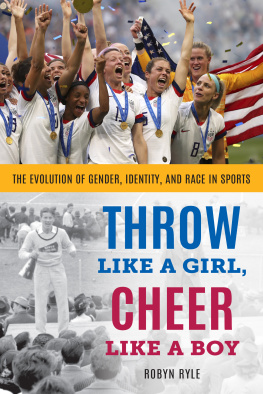
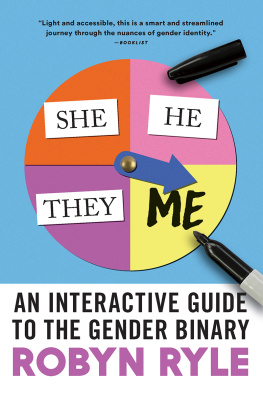
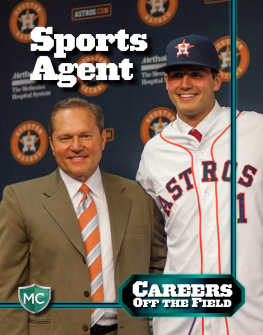
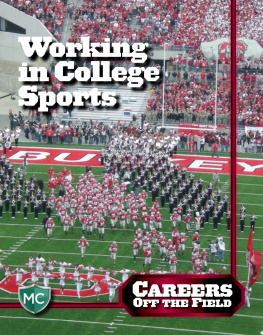
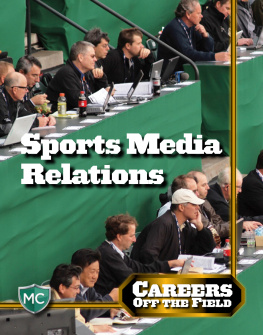

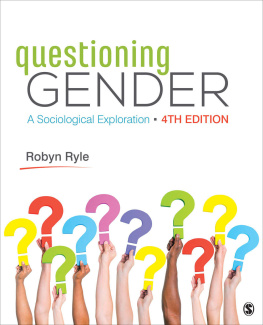

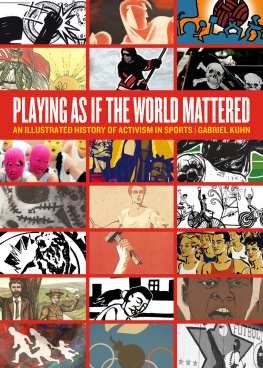
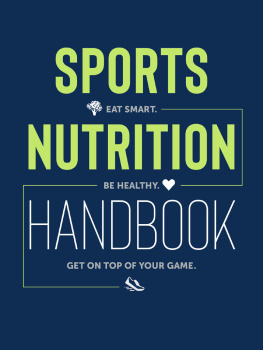

 TM The paper used in this publication meets the minimum requirements of American National Standard for Information Sciences Permanence of Paper for Printed Library Materials, ANSI/NISO Z39.48-1992.
TM The paper used in this publication meets the minimum requirements of American National Standard for Information Sciences Permanence of Paper for Printed Library Materials, ANSI/NISO Z39.48-1992.